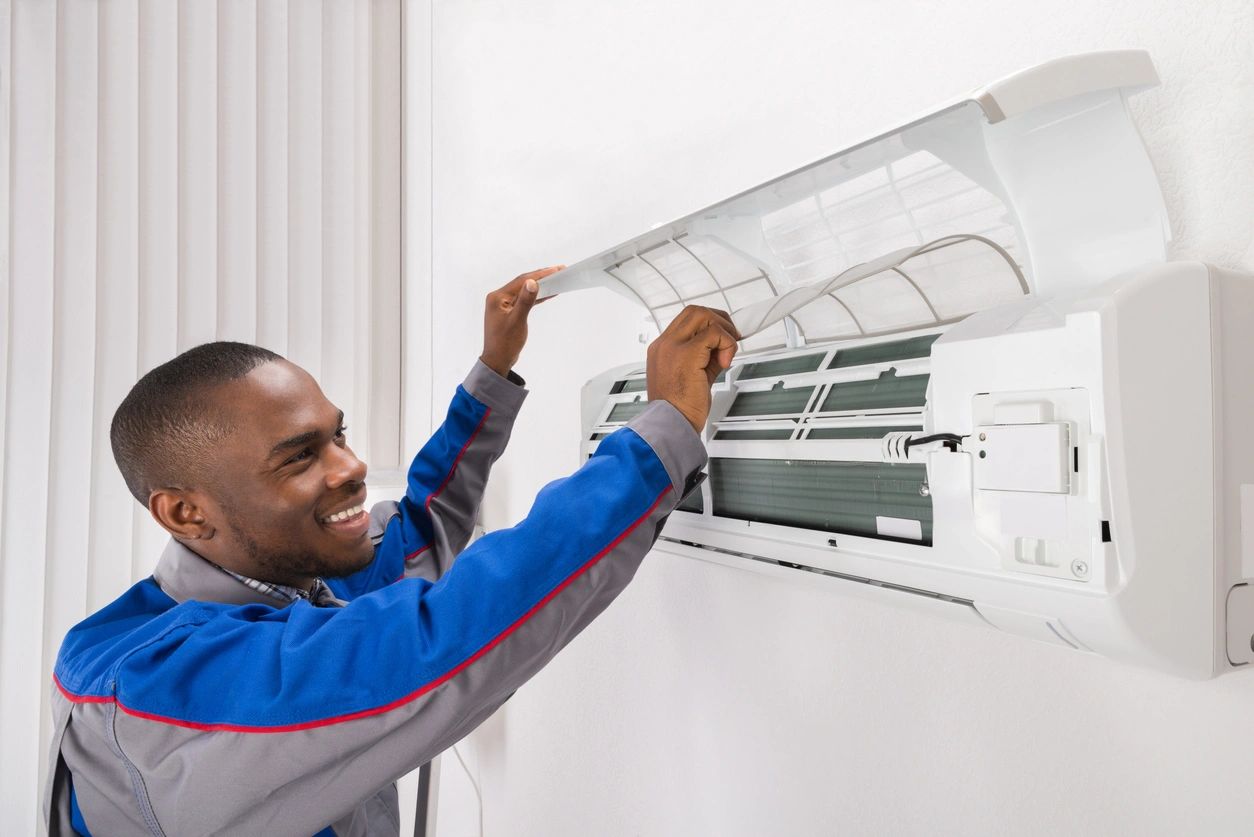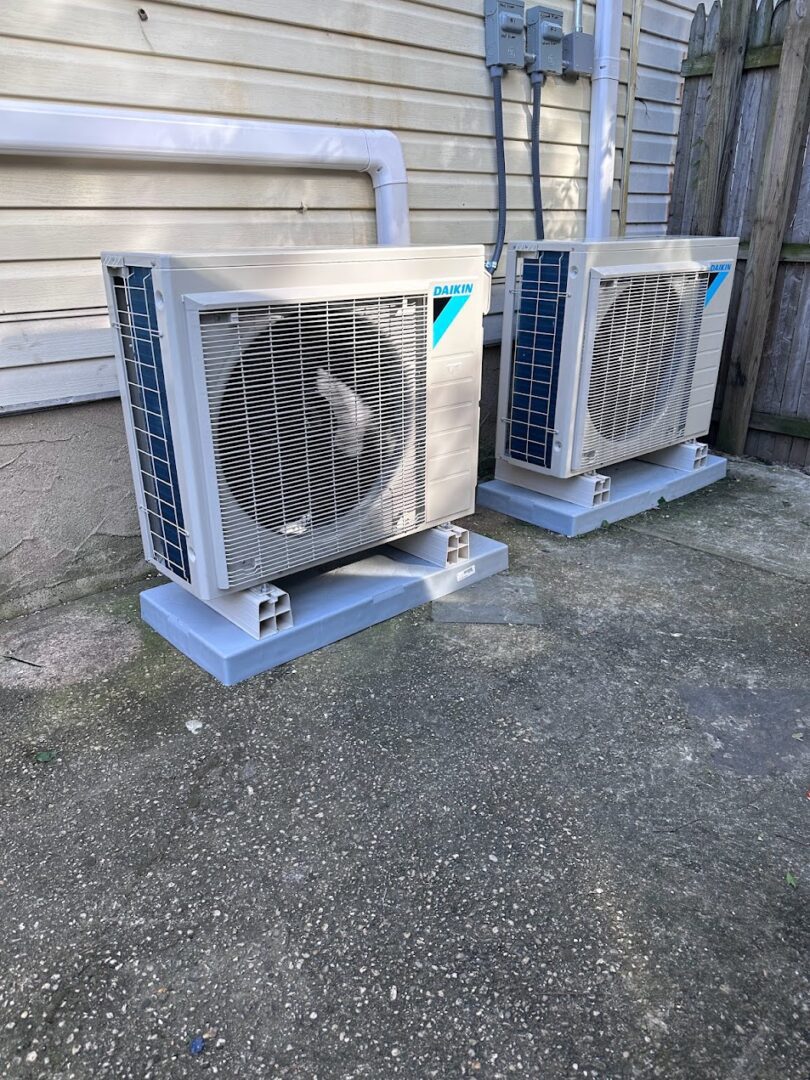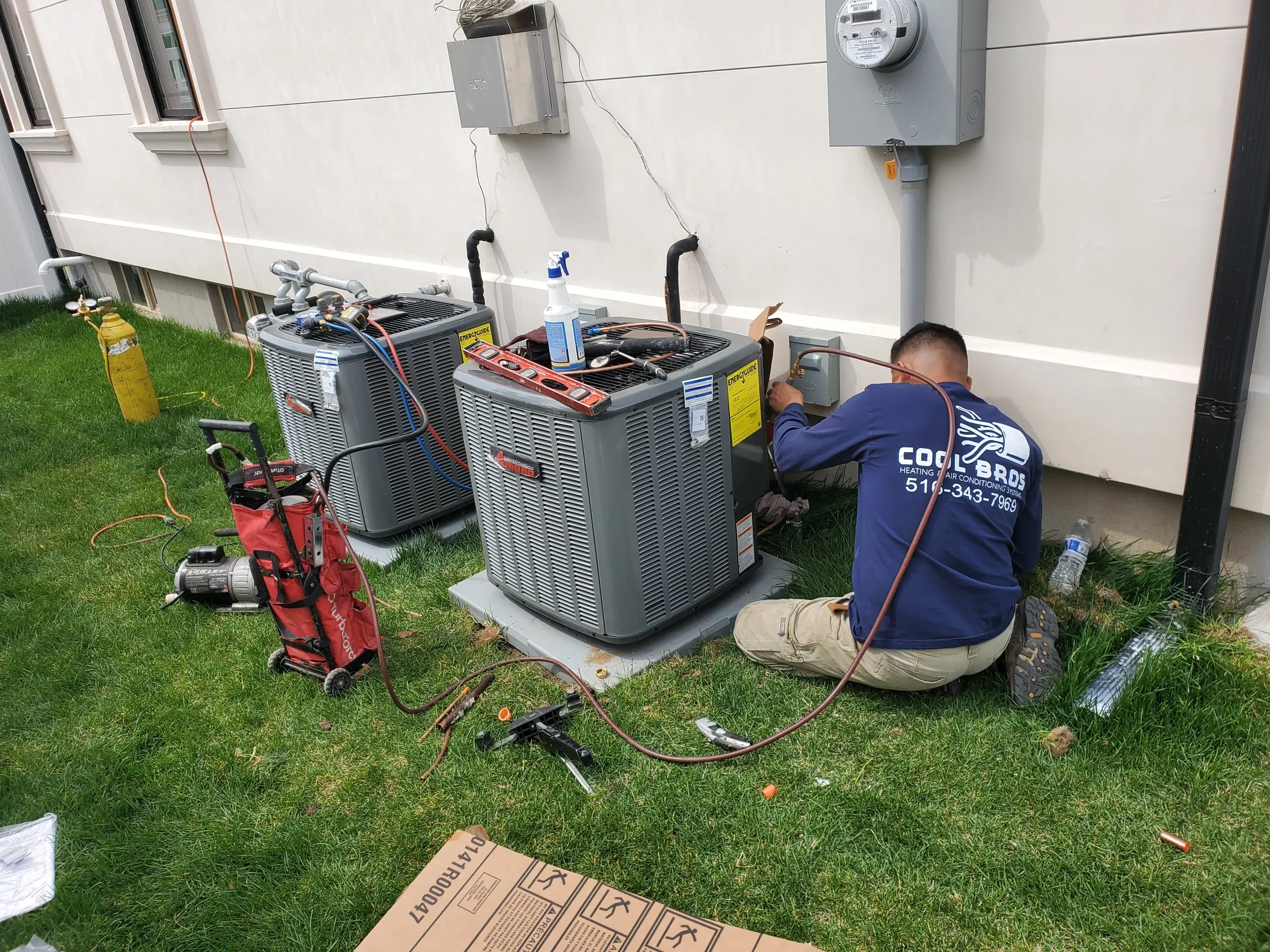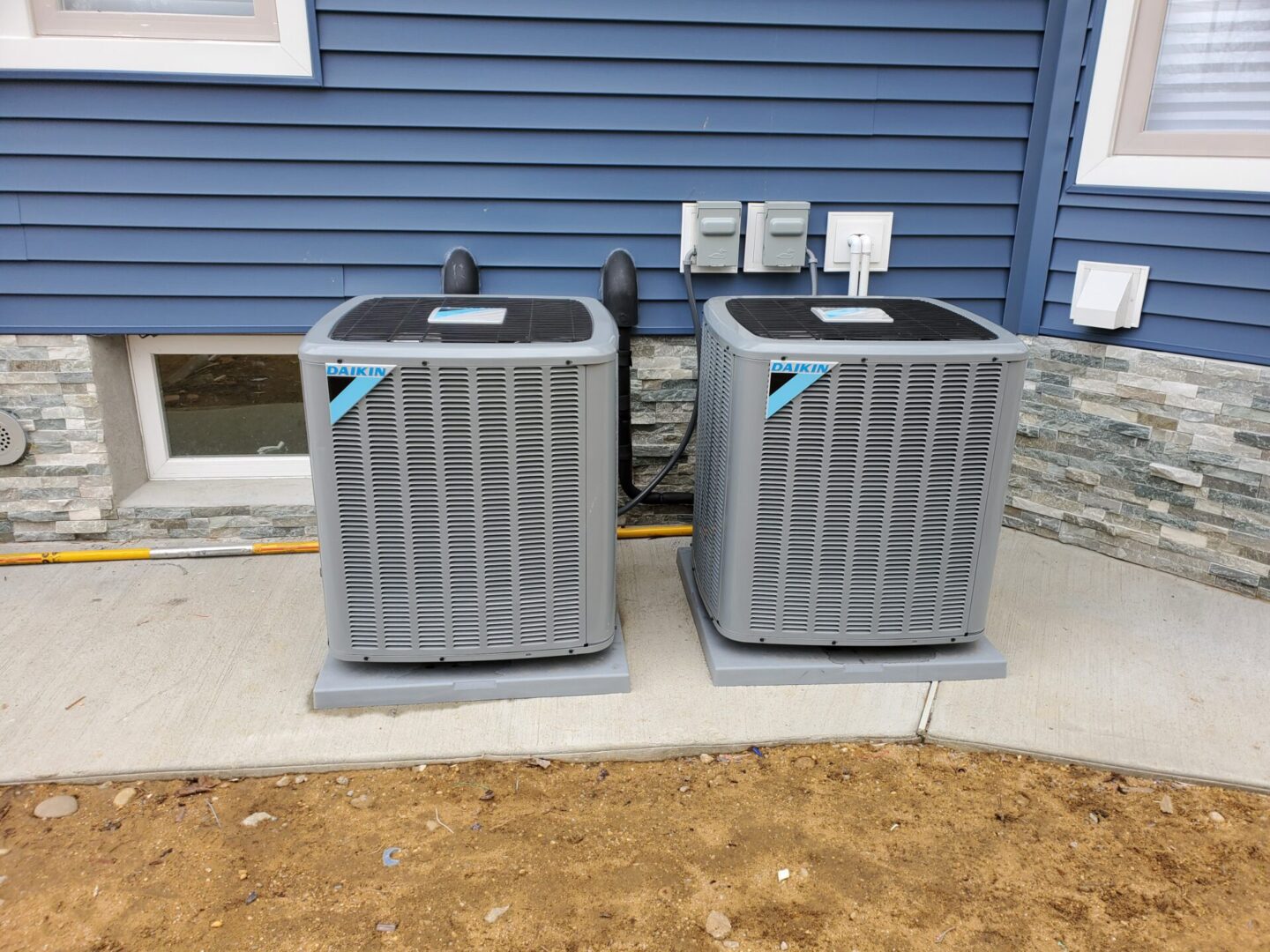FAQs About Central Air Installation: Answered
- by Cool Bros Corp
Everything You Need to Know Before Installing Central Air
What is Central Air Installation?
Central air installation is the process of setting up a centralized cooling system for your home. This involves strategically placing components such as the compressor unit, indoor evaporator coil, and ductwork to ensure efficient cooling throughout all rooms. Unlike window units or portable ACs, central air systems provide consistent comfort by distributing conditioned air evenly via ducts.
Central air installation starts with a thorough assessment of your home’s layout and cooling needs. HVAC professionals will determine the best placement for the compressor unit, typically located outside, and the evaporator coil, which is installed indoors. Ductwork is then installed to connect these components and distribute cooled air to each room. Proper sizing and installation are critical for optimal performance and energy efficiency.
Why Choose Central Air?
Choosing central air conditioning offers numerous benefits for homeowners seeking reliable and efficient cooling solutions. Unlike standalone units, central air systems maintain a consistent temperature throughout your entire home, eliminating hot spots and ensuring comfort in every room. Additionally, central air systems operate quietly, providing a peaceful environment without the noise associated with window units or portable ACs.
Another advantage of central air is improved indoor air quality. These systems typically include air filters that trap dust, pollen, and other airborne particles, leading to cleaner and healthier indoor air. Central air conditioning is also energy-efficient, helping homeowners save on utility bills over time. By investing in a central air system, you can enjoy year-round comfort and convenience without compromising on performance or efficiency.
How Long Does Central Air Installation Take?
The duration of central air installation varies depending on several factors, including the size of your home, the complexity of the system, and any existing infrastructure. On average, the installation process typically takes anywhere from one to three days. However, larger homes or installations requiring extensive ductwork may take longer to complete.
Before the installation begins, HVAC professionals will conduct a thorough assessment of your home and cooling needs. This includes measuring square footage, evaluating existing ductwork, and determining the best placement for components such as the compressor unit and evaporator coil. By properly planning and coordinating the installation process, technicians can ensure a smooth and efficient experience for homeowners.
What Factors Affect the Cost of Central Air Installation?
Several factors influence the cost of central air installation, including the size of your home, the type and efficiency of the system, and any additional components or upgrades. Larger homes may require more extensive ductwork or multiple units to adequately cool all rooms, resulting in higher installation costs. Additionally, high-efficiency systems with advanced features may come with a higher price tag upfront but offer long-term savings on energy bills.
Other factors that can impact the cost of central air installation include labor costs, permit fees, and any necessary modifications to existing infrastructure. It’s essential to consult with HVAC professionals to assess your specific needs and budget constraints accurately. By carefully considering these factors, homeowners can make informed decisions when investing in a central air system.
Is Professional Installation Necessary for Central Air Systems?
Yes, professional installation is essential for ensuring the optimal performance and efficiency of central air systems. HVAC technicians have the training, expertise, and specialized tools necessary to properly size, install, and configure these complex systems. Attempting to install a central air system yourself or hiring inexperienced contractors can lead to costly mistakes and potential safety hazards.
Professional installation begins with a detailed assessment of your home’s layout and cooling needs. Technicians will carefully plan the placement of components, such as the compressor unit and evaporator coil, to maximize efficiency and airflow. Additionally, they will ensure that all ductwork is properly sealed and insulated to prevent energy loss and maintain indoor comfort. By trusting experienced professionals with your central air installation, you can enjoy peace of mind knowing that your system is installed correctly and will provide reliable cooling for years to come.
What Maintenance is Required for Central Air Systems?
Regular maintenance is crucial for keeping your central air system running smoothly and efficiently. This includes tasks such as replacing air filters regularly to ensure proper airflow and indoor air quality. Additionally, cleaning the evaporator and condenser coils helps improve system efficiency and prevents breakdowns.
Professional maintenance services, such as annual tune-ups, are also recommended to keep your central air system in top condition. During these visits, HVAC technicians will inspect components, check refrigerant levels, and identify any potential issues before they escalate. By staying proactive with maintenance, homeowners can extend the lifespan of their central air systems and avoid costly repairs. With proper care and attention, your central air system will continue to provide reliable cooling for years to come.
Tags :
Chat with a Cool Bros specialist and get answers to any questions you may have.




